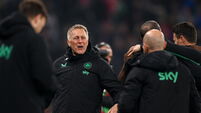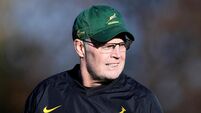Football fans made a hash of Twitter

It promised a lot back in its pomp, Twitter. And it has certainly changed sport, football anyway, in important ways.
Most notably, it has cut, slashed even, the window of appreciation of a great goal; a top, top, top, goal, if you like; a “goal of the season contender”, in old money.
Not too long ago, at a time (PM, Pre-Merson) before such goals became “worldies”, a goal of the season contender might have a shelf life of as long as 36 hours, before the naysayers would gather on a Monday morning.
Now, the window is approximately four minutes, and 20,000 Vines, between ‘OMG’ and a consensus that “the first was a better team goal” or “a much more difficult finish”.
By the same token, Twitter’s convenience as an outlet for grousing — and the beautiful ease with which grousing can be “curated” (copied and pasted) into news articles — has proved an invaluable mobiliser of sporting despair.
Since the Premier League began, the average innings of a manager has dropped from 3.24 years to around 1.29 years. When Twitter execs present their key metrics, in the San Fran boardroom, and before they get round to the bad news about falling engagement and tumbling share price, presumably they take credit for at least 18 months of that drop.
If you take Twitter time into account, Arsene Wenger has arguably served around 60 years as Arsenal manager. And when Twitter eventually brings him down, it will have a second Arab Spring to shout about.
Incidentally, Leicester City’s most remarkable achievement this season has been to preserve their status as a romantic underdog story this long, before becoming, as of last Monday’s Twitter consensus, “the worst ever Premier League champions”.

Some would argue it is not a good thing, this acceleration of opinion life cycles, probably the same killjoys who don’t want you using your phone walking down the street. Raw, young, sacked managers such as Garry Monk would probably back this line of thinking. As would frustrating young footballers like Alex Oxlade-Chamberlain.
But the more level-headed will accept that this is simply natural evolution, an efficient way of packing more into life, giving as many Oxes as possible their brief shot at impressing us. And as many goals their four minutes at the top, top, top.
But if Twitter has given us fuller lives, it has failed us on some of the other big promises made; most importantly, the facility to send horrible personal abuse to the phones of professional sportspeople.
This was the “unique value proposition” of Twitter, that men who had spent their afternoons roaring invective and employing their wrists in acts of mime, would be able to go home and direct their thoughts to the footballers who had caused them sadness and anger.
And they can still, theoretically, do that these days. But of course we know there is nobody paying any attention. Except, at least, the curators.
“It’s phenomenally powerful to feel you’re one step away from somebody on Twitter. You can connect instantly without going through an agent or a brand manager,” the gurus promised us, back in the day.
But we ruined it.
We had the brief glory days when footballers ran wild on Twitter like real people. Ashley Cole calling the FA a bunch of twats. A Premier League goalkeeper tweeting one of those pornbot accounts, thinking nobody could see, trying to organise a personal audience. Everything Mario Balotelli tweeted. Even the days when Joey Barton tried to impress by pasting Nietzsche quotes seem like innocent, carefree times now.
A million ‘Twitter storms’ were curated, while the going was good. And much abuse was sent footballers away, while we thought they might still be reading it.
But just as the great thirst for ‘controvassy’ killed almost all media access to sportspeople that isn’t carefully filtered through a PR sieve, now the brand managers have more or less shut up shop.
Men like Anthony Stokes, whose life will likely always defy the scope of PR, still remind us, every now and again, of the glory days.
But footballers on Twitter is now about sponsor’s messages or, at best, Theo Walcott vowing ‘we can bounce back stronger #COYG’ or Phil Jones wishing a “Happy Lunar New Year to my fans in Asia”.
There will still be gaffes, no matter how many gurus have signed off on a Tweet. In February, Phil Jones — who has his own PJ4 logo, you won’t be surprised to hear — marked the Munich disaster anniversary by tweeting a photo of the Busby Babes with the message: “Never forget #flowersofmanchester #BusbyBabes”.
Which was nice, except PJ4 emblazoned his logo on the photo and his Instagram handle and his Facebook address, as his people sought to leverage social, as they do.
And when thousands of United fans objected strongly to the crassness of this opportunism, nothing happened. Indeed, six weeks later the message remains in place, gathering abuse by the hour. Whatever about his people, it appears PJ4 isn’t listening. As we saw in January, PJ4 would rather take his chances in the Anfield terraces, than mix it out there on Twitter.
That should worry them in the San Fran boardroom.
Arsene Wenger’s chemistry is just all wrong

After another dismal week for Arsenal, still the manhunt goes on for ‘leaders’, as if the right sort of badge-on-his-sleeve-wearing tub-thumper would have persuaded Danny Welbeck to poke in that open goal v Watford or convinced somebody to mark Luis Suarez at the Nou Camp.
Is there any danger better footballers might yet prove just as workable a solution?
But since Arsenal’s failings have been widely diagnosed as psychological, we should persist with the intangibles. Famed basketball coach Phil Jackson has often talked about his investigations into “what creates the bonds between players that separate them from rivals”.
In an analysis of Leicester’s over-achievement in yesterday’s paper, Prozone consultant Damien Comolli assured Eoin O’Callaghan the machinery is almost ready to analyse team chemistry, to measure ‘teamness’.
“More quantitative attention is being paid to how well players improve the in-game performances of their teammates,” promised a recent Harvard Business Review article. We don’t know yet if the software can be calibrated to assess the slump in Mesut Ozil’s shoulders when Giroud or Walcott botch his probings.
Maybe it will be able to process the effects of the Alexis Sanchez glare or his reluctance to trust anyone else with the ball. Perhaps the algorithm will factor in Ozil’s sprint down the Nou Camp tunnel while his teammates lingered in the rain to acknowledge fans. Wenger has often been criticised for his patience with players, for his belief in the continuity needed to build chemistry. He has added the footballers Arsenal need, a rate of one per season.
Unfortunately, Arsene may always have time on his side, his better footballers are unlikely to wait for this project to take its course. In the meantime, their impatience is unlikely to do much for bonds and teamness. And might, more than any leader ship deficit, explain why Wenger’s current team is one of his most disjointed.









